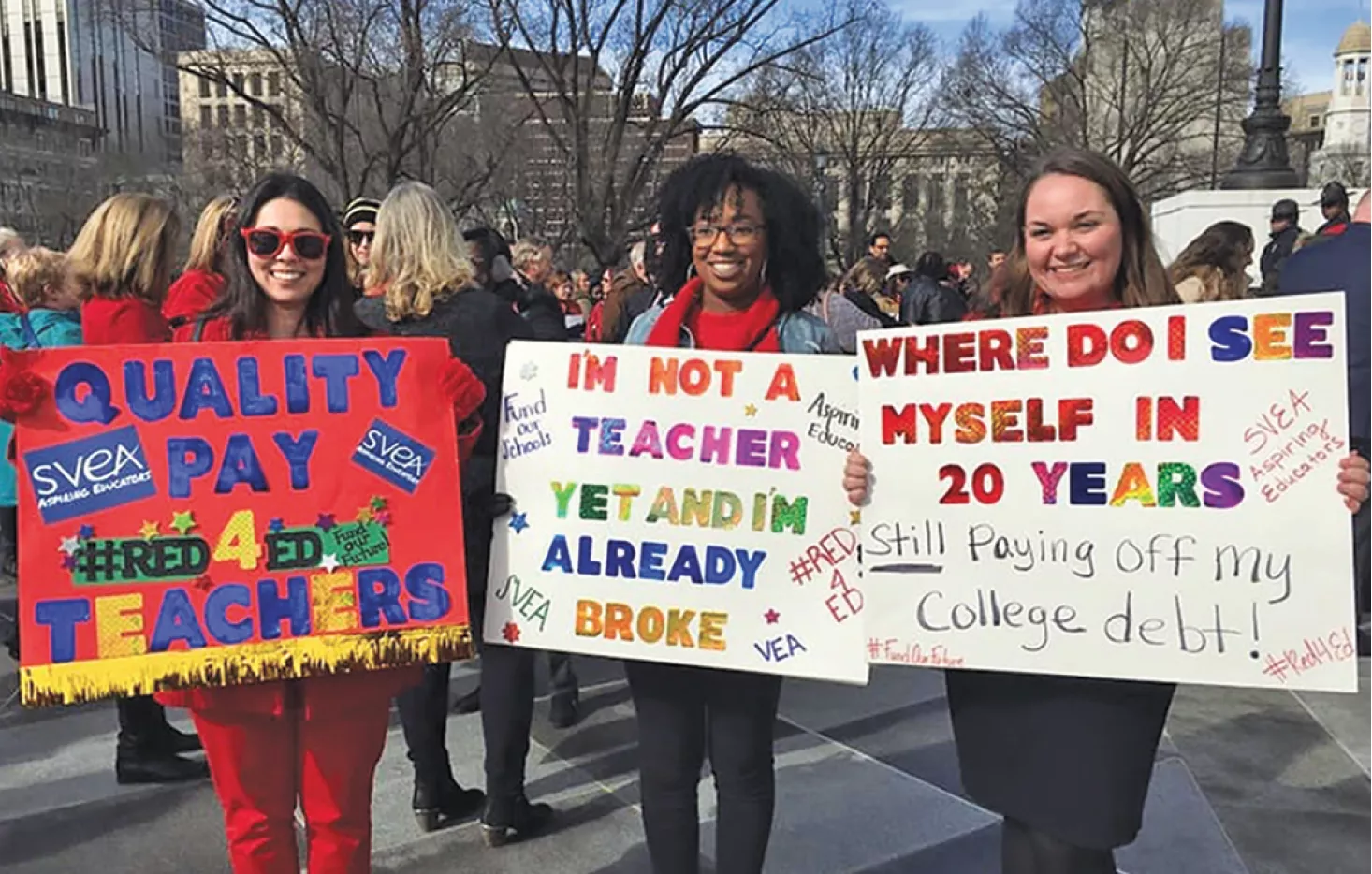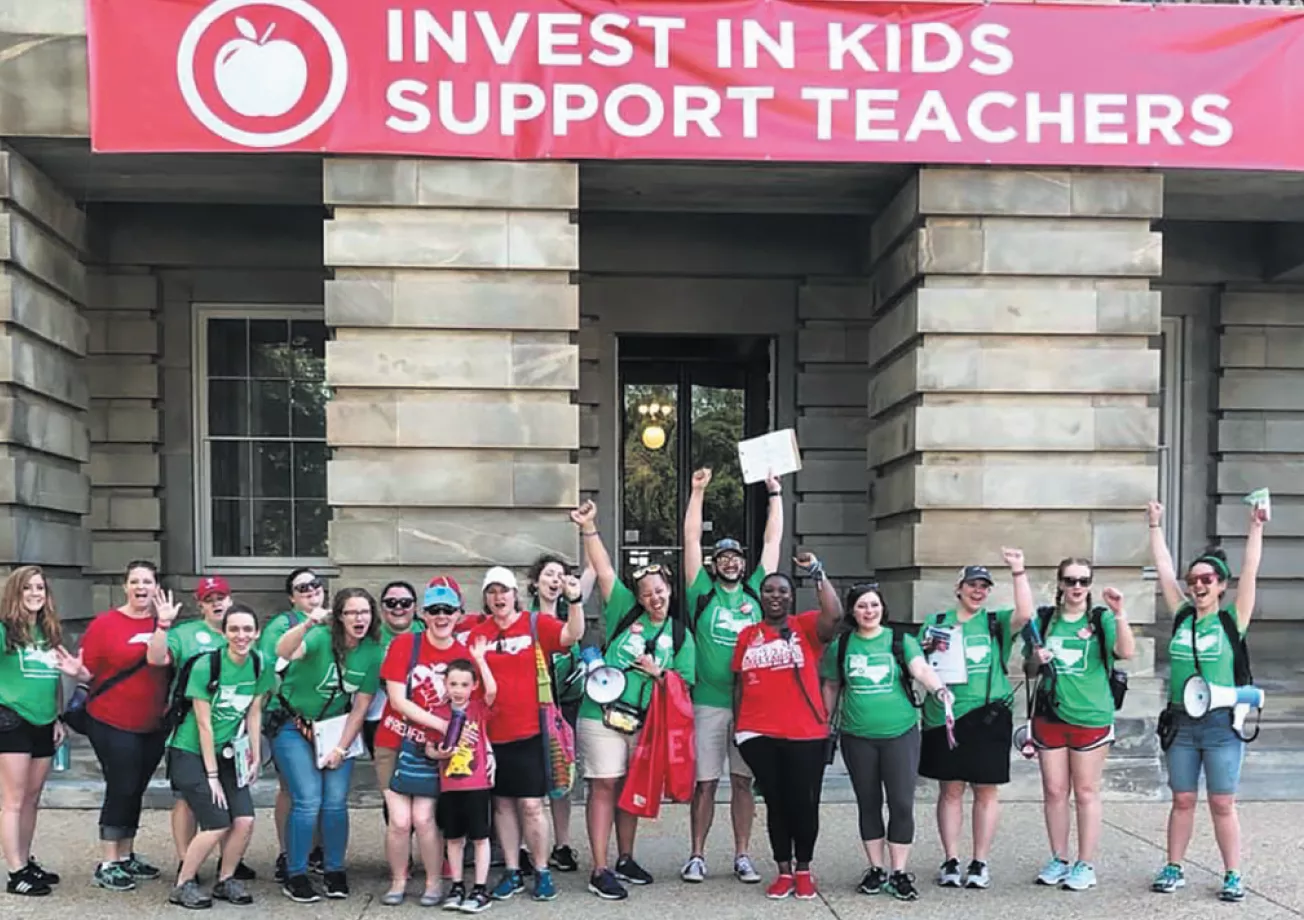Aspiring educator Jessica Bailey can hardly describe what it was like to join the tens of thousands of teachers and allies who rallied in Richmond, Va., in January 2019. “To look across the crowd of people, the sea of red, and see everybody united and fighting for their students. I get chills just thinking about it,” says Bailey, a Shenandoah University student and president of the Student Virginia Education Association (SVEA) Aspiring Educators.
With her red shirt and protest sign, Bailey had joined #RedForEd—a national movement of educators, parents, and students, fighting together for the public schools our students deserve. Too many students today are struggling to learn in crowded classrooms with outdated textbooks and technology, and too many educators can’t afford to do the jobs they love.
One solution is increased state funding, which means educators and parents must raise a united voice in capitol buildings across the nation. “It’s not about politics. It’s about your future,” says Bailey. “These policies and laws are going to affect you and your students.”

Since 2018, NEA aspiring educators have walked the streets in Michigan, North Carolina, and many other states. In Raleigh, N.C., Monica Smith, president of the Aspiring Educators chapter at North Carolina State University, rallied alongside thousands in May 2018, and then served as an organizer for the 2019 “March for Students and Rally for Respect.”
“Hopefully the message that we’re getting across is we’re aware of what’s going on, and we’re not going to stand for it anymore,” she says. Poor funding for schools in her state has led to growing class sizes, a shortage of school supplies, and big inequities between rich and poor districts. “A lot of our schools are in such disrepair that they’re not safe,” says Smith.
She is impatient with aspiring educators who don’t see #RedForEd as part of their job. “None of us went into teaching for the money, obviously. So what was your purpose?
99.9 percent of people will say ‘for the students,’” Smith says. “So my next question to you is: Why aren’t you willing to do this organizing work for the students? You just being in the classroom and being a great teacher isn’t enough.”
Back in 2018, West Virginia educators lit the spark that ignited the #RedForEd movement. They led a nine-day strike for more funding and better pay. (PS: They won!) Since then, #RedForEd has spread across the country.
In Arizona, educators shared photos of decrepit textbooks and mouse-infested classrooms. In Los Angeles, they marched through the streets with 1,600 silk-screened picket signs that they designed and painted themselves. Rallies and protests have been held from Arizona to Alabama to Annapolis, Md. In May 2019, more than 10,000 red-shirted educators marched on the South Carolina state Capitol.
Beyond demanding a livable wage, #RedForEd educators are also fighting for students to get access to school counselors, nurses, librarians, and social workers. They want every child—no matter where they live, or what they look like—to have access to opportunities.
Is it working? Yes! In Oklahoma, lawmakers increased the funding formula per student by 19 percent. In Oakland, Calif., educators won 11 percent salary increases, class-size reductions at every school, lower caseloads for special education teachers and counselors, and more.
Not only are educators getting a voice, but they are getting a winning voice. Join them, and let your voice be heard!




